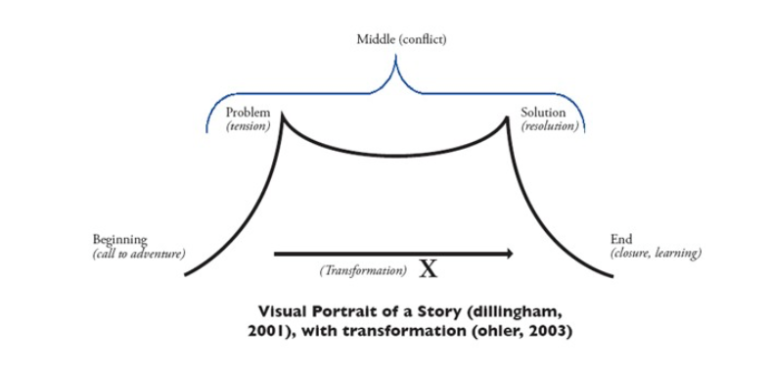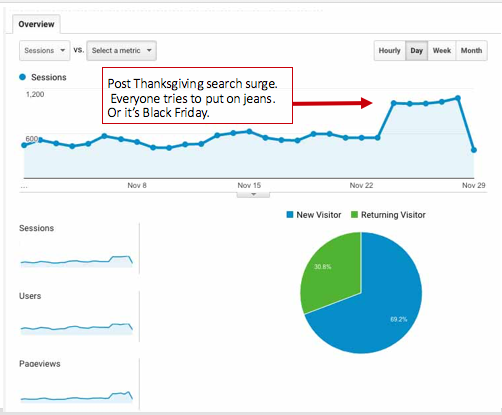Regardless if your role is as a consultant, member of an in-house marketing team or part of an agency PPC staff, reporting is an inevitable part of your job. If you are one of the fortunate individuals, the receiving end of your reporting efforts might have a general understanding of paid search. But, for most of us… that’s why we get paid the big bucks; to spend our days in the weeds, crunching numbers, analyzing stats and translating our hard work into a tidy one pager.
An approach I have found to be effective to frame a PPC report is to follow a few basic storytelling rules. This also helps avoid the common stat regurgitation pitfall. There is nothing worse than someone repeating stats that are clearly showcased in the supplemental charts and graphs. Let’s review these said rules of storytelling… (Cause I’m sure you remember that specific session taught in 11th grade Eng Lit class)
Storytelling is Problem Solving…

Storytelling walks an audience through the stages of problem solving, which is why it resonates with people.
Here is a quick example to help set the stage. We “begin” as I present my client with glowing end of month numbers, but in the meeting the client mentions getting heat from upper management to take digital strategies to the next level. As I dig into the current campaign we encounter the “problem”. Our share of voice on our current paid search platforms are capped and it’s going to be very difficult to meet their goals. Stay with me… We’re about to enter “transformation” station which leads me on a research expedition in search of new platforms and avenues that might be a fit. Ah ha… I’ve reached my “solution”. Despite my clients hesitancy it is time to forge into the uncharted territory of social media advertising space. My solution is jam pack with how the social advertising space has evolved since they first tested it unsuccessfully. Of course the client “learns” a ton from my spectacular presentation and buys in with no questions asked. Here we get the “End… Closure” and yeah a client or superior asking no questions is a fairy tale, but it’s my story and I’m an eternal optimist.
How to Apply Storytelling to PPC Reports
Now fully equipped with how storytelling relates to our problem solving process, let’s look at how it can be applied to PPC reporting. The one underlying rule of thumb I try to follow when crafting my report story is to include information the audience can’t find within the report itself. (See above: also referred to as stat regurgitation)
For this example and in light of the past and upcoming holidays I’m going to report to a ficticious client who sells fitness equipment. In my example we are wrapping up the past month of ecomm sales and the report includes a Black Friday promo.
It’s obvious looking at this trend line that the month was awwwwesome! Treadmill store owner (A.K.A My client) knows a few details about the campaign, but for the most part leaves us to work our magic. Supplemental report visuals are showcased in the image to the right.
The Visual Portrait of a PPC Report Summary as told through Storytelling
Beginning (Call to Adventure)
Our goal this month was to push an increased budget while maintaining our CPA across established paid search channels and test new channels as we enter a busy season.
Problem (Tension)
As this month holds one of the most important days for retailers our challenge was to reserve budget to accommodate for higher daily spends as we approach Black Friday. We projected using historical data that paid search traffic will increase by around 60% and conversion rate will increase from 1.3% to 2.0%. As we launched our promotion our goal was to have enough reserved budget in place where we could maximize the high sale week following Black Friday, but not sacrifice our normal daily session and conversion volume.
Transformation & Solution
To achieve this goal we strategically optimized which ad groups remain running and decreased bids in the weeks leading up and have slowly started to increase as we approached our Black Friday promotion.
End & Learning
Our approach was successful. We were able to maintain a stable flow of paid search traffic during the weeks leading up to our promotion and increase our site visits by 79% as compared to the same time previous time period. We are also reporting our Black Friday promotion and bid/ budget strategy helped increase visits to the site by 89% compared to 2015.
All Good Stories Must Come to an End
The above example is very basic and will likely be applied to several different challenges and situations within a yearly, monthly, quarterly report. When reports follow a common thought process it can be easily digested wether you are presenting to peers or executives. I’ve even applied this method to emails where I need to explain complex data and situations. Lastly, this formula can also help streamline reports and can save time when trying to devise a way to recap all the hard work you’ve put into your PPC campaigns.




